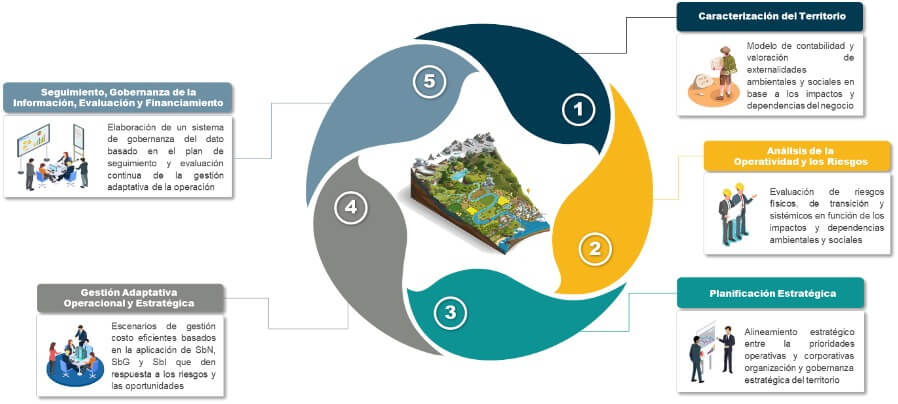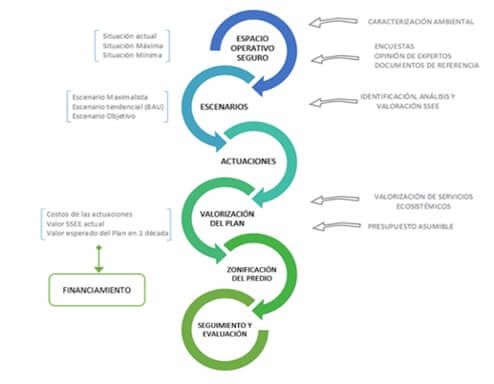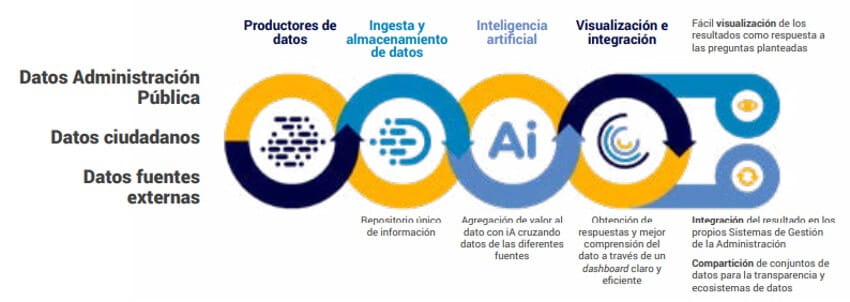Making natural capital visible means that the real value of the natural environment can be transferred to the decision-makers who manage the territory. Based on the quantification of society's and the company's relationships with the environment, the value of the natural environment (its natural assets) and the social demand for nature (ecosystem services) can be parameterised in order to identify nature's contribution to a framework of social and economic development, and to define how this framework of development depends on nature.
Studying the system of social and ecosystem relations in this territorial context leads to the parameterisation of the natural environment. The information provided by analysing society's demand for nature, and its use, transformation and enjoyment of natural resources and ecosystem services, provides qualitative, quantitative and economic information about how demands and benefits are exchanged in the social-ecological system. These results provide the basis for identifying management indicators, which interpret how the system operates and enable evaluation of a "safe" operating model with double materiality.
The concepts and tools presented in this series (the capitals model, planetary boundaries, the doughnut economy, valuation of natural capital) provide an objective method for projecting management scenarios for the six capitals, based on actions that modify the state or condition of the natural and social system, the exchange of benefits in relationships (ecosystemic, socio-ecological, socio-economic) and the risks derived from current and future impacts (qualitative, quantitative, economic) on the territory analysed. The traceability of the information collected in the territory is retained and provided to strategic and operational decision-makers, with a view to its exploitation internally (by shareholders) or externally (by stakeholders).

After this working methodology has been implemented in each specific case, decision makers will be able to assess the scenarios and determine how their double material contribution to the territory's sustainability creates value in the face of existing environmental and social demands. As regards governance and risk management, the methodology also provides efficient solutions to the challenges involved in operational and corporate sustainability, based on how far or near the management and exploitation of the various key elements in the social-ecological system is to the limits of the safe operating space.
Benefits of systematising the management of value
Thanks to the systematisation of this procedure for analysing and modelling the territory's social-ecological value, decision-makers can also perform an iterative evaluation of the risk created by their actions and visualise the result of quantifying the value at risk caused, and as a result deliver an ad hoc definition of territorial management plans that:
- Simultaneously value the production of ecosystem services and the systemic stress created in that production.
- Consider and integrate productive, social, environmental and risk prevention aspects in overall and standardised terms.
- Can be vertically integrated in order to obtain and manage indicators at an aggregate level (corporate or jurisdictional), as they are based on quantified and traceable scenarios.

The collection, production and use of quality data based on the territory are sine qua non prerequisites for the application of this approach. Much of its traceability, robustness and value are lost without them. To that end, tools such as the exploitation of remote sensors and the integration of new monitoring systems, such as multispectral cameras, UAV-LiDAR and other non-optical sensors, involving communication by IoT logics and filtered through the application of specific AI (artificial vision and other classification applications) provide essential mechanisms for accessing data of high quality, frequency and traceability with costs that are minimal in the long term compared to conventional costs of acquisition.
The generation and use of quality data also leads to:
- The reduction and/or management of operational uncertainty, by providing better foundations for decision making.
- An increase in the analytical capacity available to determine load capacities and stress levels (risk), thereby increasing the analytical quality of planning.
- Scaling of the data created for one territorial or operational application to other areas, such as the jurisdictional or corporate spheres.
- Progress towards adaptive management by making evaluation and continuous learning possible.

As a result, any company, organisation or government body can create operational solutions based on its environmental, social and governance (ESG) objectives, generating traceable, quality ESG indicators with no risk of greenwashing. Moving towards a data-driven and integrated management model for the business and its sustainability means that progress in sustainability with double materiality for the environment, society and the economy can be evaluated, certified and reported, according to the vision presented by the European Financial Reporting Advisory Group (EFRAG, 2021).
Land value management allows for an assessment of potential risks in order to adapt and improve the sustainability model. We explain how in our report 'From traditional businesses to sustainable businesses'.